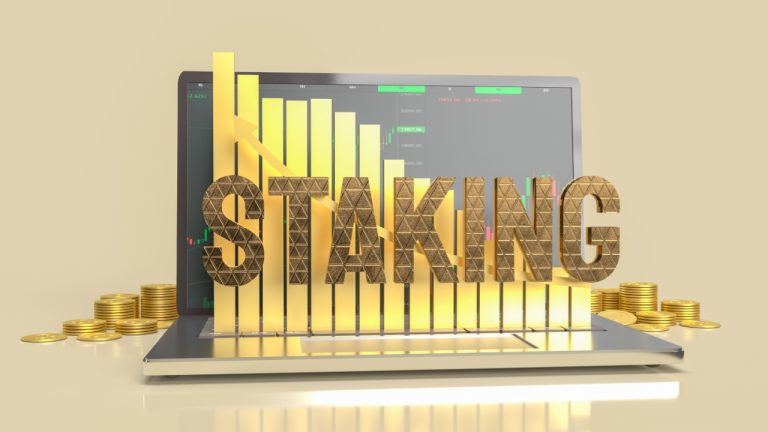
What Happened to the Crypto Market in 2021?
HodlX Guest Post Submit Your Post
The crypto market has been booming in 2021.
Since January 1, the total market capitalization of the digital asset industry has grown from $776 billion to $1.56 trillion.
But even after the recent market crash, the cryptocurrency sector features a year-to-date (YTD) ROI of 101%, outpacing the growth rate of all major asset classes.
By now, we can safely conclude that we are in a crypto bull market. But what are the factors behind the exponential rise of the digital asset industry in 2021?
Record-breaking institutional Bitcoin investments
One of the main reasons behind the crypto market’s 2021 bull run is the rising institutional adoption of digital assets.
Since mid-2020, in the wake of the Covid-19 pandemic and its financial consequences for businesses all over the world, institutional investors have started capitalizing on Bitcoin’s excellent store-of-value qualities as well as its high growth rate.
While publicly traded businesses like MicroStrategy and Square paved the way for institutional crypto investments, we have seen major corporate players pouring quite some money into BTC during 2021.
This includes the Elon Musk-led electric car maker Tesla, the Japanese video gaming firm NEXON, Seetee AS, the crypto investment arm of the Norwegian holding company Aker ASA and the Chinese technology corporation Meitu.
As a result, institutional investors including both private and publicly traded companies, hedge funds and even Ukraine’s and Bulgaria’s governments hold nearly 8% of Bitcoin’s circulating supply.
Despite the recent market crash and negative news, we expect more institutional investors to join the crypto space by investing in Bitcoin and other digital assets.
In fact, in the next few years, there could be a heated race among S&P 500 companies to buy and hold Bitcoin, especially since they have witnessed Tesla making $101 million in profits by selling some of its BTC in Q1 2021.
Major financial firms adopt crypto for payments
Before this year, we have not seen many large financial players accepting crypto payments.
On the contrary, during the 2017 bull run and the 2018 bear market, the main trend among corporates was to bash Bitcoin and call all cryptocurrencies a ‘bubble.’
However, this sentiment has gone through a major change this year. Now, even some leading financial institutions and payment firms are either experimenting with or have already integrated crypto into their ecosystems.
A perfect example of the above is JP Morgan. In September 2017, Jamie Dimon, the CEO of the US investment bank, called Bitcoin a fraud, saying that the cryptocurrency is “worse than tulip bulbs.” Now, JPM is reportedly planning to launch a Bitcoin fund this summer while projecting BTC to compete with gold and reach $130K in the long term.
Moreover, the payment giant PayPal announced in late 2020 that it allows its US customers to buy and purchase crypto. This year, the company shared even better news with the industry by rolling out digital asset payments at 29 million of its merchants.
In addition to PayPal, card processing giants MasterCard and Visa have both announced this year that they would integrate cryptocurrency payments into their payment networks.
With a changing sentiment and major market players adopting digital assets, we believe it will soon become the standard to accept cryptocurrency as a payment method among businesses.
Crypto provides financial sovereignty while facilitating peer-to-peer (P2P) transactions without any intermediaries or government oversight.
As more consumers realize these benefits, businesses – even the ones strongly opposing digital assets – will have no chance but to offer crypto payments for their customers to fulfill the rising demand.
DeFi continues to boom in 2021
Decentralized finance (DeFi) has grown to be one of crypto’s most successful sectors since 2020.
DeFi continued to boom in 2021, expanding the sector’s market from $15.89 billion to $56 billion, representing a massive growth of over 250% as of May 24.
DeFi has become a trending movement in the cryptocurrency space by offering users access to the decentralized alternatives of solutions in traditional finance, such as lending, borrowing and savings.
However, unlike at banks, anyone can access DeFi products without restrictions.
DeFi’s rapid development in 2021 is an even more prominent achievement if we consider that it continued to thrive despite Ethereum’s scalability issues.
For these reasons, DeFi is expected to continue its growth in 2021, which should get a significant boost in the next two years after the launch of Ethereum 2.0.
The rise of NFTs
Non-fungible tokens (NFTs) took the crypto market by storm in 2021.
From billionaire investor Mark Cuban and Twitter CEO Jack Dorsey to Microsoft, Rick and Morty, the NBA and K-pop stars, many individuals and organizations have minted and issued their NFTs on the blockchain this year.
Limited in quantities, NFTs are unique, irreplaceable tokens representing digital collectibles, licenses, artwork and even personal data that can be easily verified on the blockchain in terms of authenticity.
For these reasons, many have realized the power of NFTs, creating a sudden, significant boom within the crypto market.
That said, for the NFT market to continue its rapid growth in the next few years, service providers have to turn a major focus on the development of the technology.
Crypto adoption can be slowed down but not stopped
The modern financial and economic system is a game of musical chairs. And buying Bitcoin is booking your chair in this game in advance.
The first billion-dollar public players who understand this concept are now emerging. And in the coming years, even more S&P 500 companies are expected to adopt cryptocurrency for a perfect reason nobody wants to be the last corporation to buy fabulous money.
Mass adoption has its ultimate goal, which we are gradually moving towards – to provide each individual access to an uncontrolled, uncensored and completely decentralized economy.
Naturally, these procedural forces may try to harm the patrons of the existing centralized system.
However, the crypto market develops according to all the rules of nature nd what grows naturally can be slowed down but never stopped.
Mary Pedler, founder, and Sofia Bobrik, co-founder, CryptoColumnist Communications Agency
Follow Us on Twitter Facebook Telegram
Disclaimer: Opinions expressed at The Daily Hodl are not investment advice. Investors should do their due diligence before making any high-risk investments in Bitcoin, cryptocurrency or digital assets. Please be advised that your transfers and trades are at your own risk, and any loses you may incur are your responsibility. The Daily Hodl does not recommend the buying or selling of any cryptocurrencies or digital assets, nor is The Daily Hodl an investment advisor. Please note that The Daily Hodl participates in affiliate marketing.
Featured Image: Shutterstock/Alex from the Rock
The post What Happened to the Crypto Market in 2021? appeared first on The Daily Hodl.
Go to Source
Author: Mary Pedler & Sofia Bobrik








